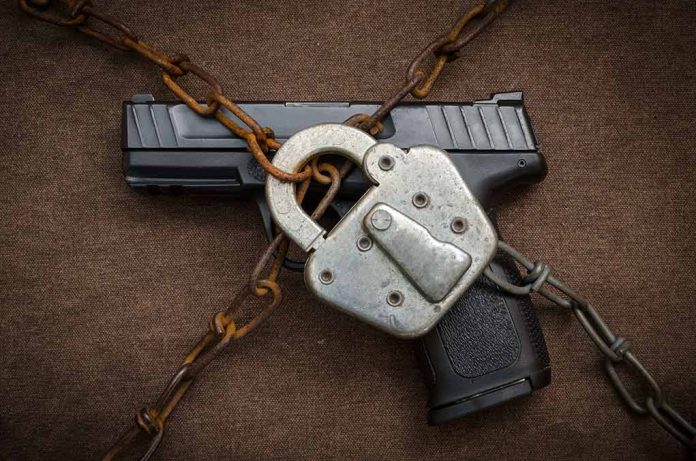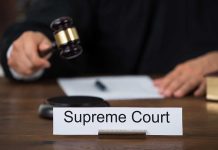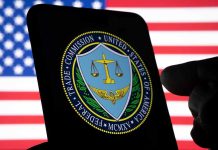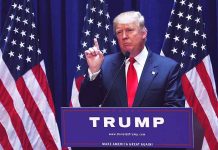
The Supreme Court is set to review the legality of federal regulations on “ghost guns,” potentially reshaping U.S. gun control policies.
At a Glance
- The Supreme Court agreed to hear a Biden administration appeal on ghost gun regulations
- Ghost guns are untraceable firearms made from kits or 3D-printed parts
- A coalition of 24 attorneys general urges the Supreme Court to uphold the federal rule
- The case could have significant implications for Second Amendment rights and public safety
Supreme Court Takes on Ghost Gun Regulation Case
The U.S. Supreme Court has agreed to review the Biden administration’s appeal regarding the regulation of ghost guns. These weapons, which lack serial numbers and are often assembled from kits purchased online, have become increasingly prevalent in recent years. The case centers on a 2022 rule that expanded the definition of a firearm under federal law to include unfinished parts like handgun frames and long gun receivers.
The regulation, issued by the Bureau of Alcohol, Tobacco, Firearms and Explosives (ATF), subjects ghost gun kits to the same regulations as conventional firearms. This includes requirements for serial numbers, background checks, and licensing for manufacturers and sellers. However, the rule has faced legal challenges from gun owners, advocacy groups, and companies who argue it exceeds the authority granted by the Gun Control Act of 1968.
Supreme Court agrees to decide whether Biden administration overstepped federal law by imposing new regulations on "ghost guns" https://t.co/eiKBO9egdZ
— CNN (@CNN) April 22, 2024
Coalition of Attorneys General Supports Regulation
A coalition of 24 attorneys general, led by District of Columbia Attorney General Brian L. Schwalb, Pennsylvania Attorney General Michelle Henry, and New Jersey Attorney General Matt Platkin, has filed an amicus brief urging the Supreme Court to uphold the ghost gun regulation. The coalition argues that the rule is consistent with existing law and necessary to close a dangerous loophole in firearm regulations.
“Unlicensed, undetectable ghost guns have been flooding into communities across the District and country at an alarming rate over the past decade,” said Attorney General Schwalb. “These untraceable weapons were bypassing existing gun laws—like background checks—and increasingly became the weapon of choice for those who commit violent crimes. I urge the Supreme Court to uphold this commonsense gun safety regulation that simply treats ghost guns like any other firearm.”
Rising Concerns Over Ghost Gun Proliferation
Law enforcement agencies have reported a significant increase in the number of ghost guns recovered at crime scenes. According to the Department of Justice, police submitted about 1,600 ghost guns for tracing in 2017, a number that skyrocketed to over 19,000 in 2021. In 2022, the Department of Justice recovered 25,785 ghost guns.
“Ghost guns are guns, and they need to be regulated as such,” said Attorney General Josh Stein. “We can’t allow dangerous people to use a loophole to get their hands on dangerous weapons and put our people in harm’s way.”
Proponents of the regulation argue that it is already improving public safety, citing a drop in ghost gun recoveries in multiple jurisdictions since its implementation. However, opponents contend that the rule oversteps the bounds of the 1968 law and infringes on Second Amendment rights.
Implications of the Supreme Court’s Decision
The Supreme Court’s ruling on this case could have far-reaching consequences for gun control efforts in the United States. If the Court upholds the regulation, it would solidify the federal government’s authority to regulate ghost guns and potentially pave the way for further restrictions on untraceable firearms. Conversely, if the Court strikes down the rule, it could limit the government’s ability to address emerging threats in the firearms landscape and potentially open the door to more unregulated gun manufacturing.
As the case progresses, gun rights advocates, law enforcement agencies, and policymakers will be closely watching the Supreme Court’s deliberations. The outcome of this case may well shape the future of gun control and Second Amendment interpretation in the United States for years to come.










